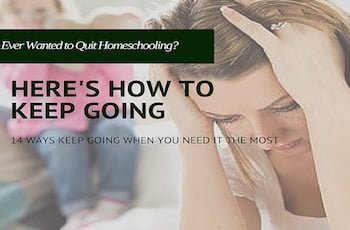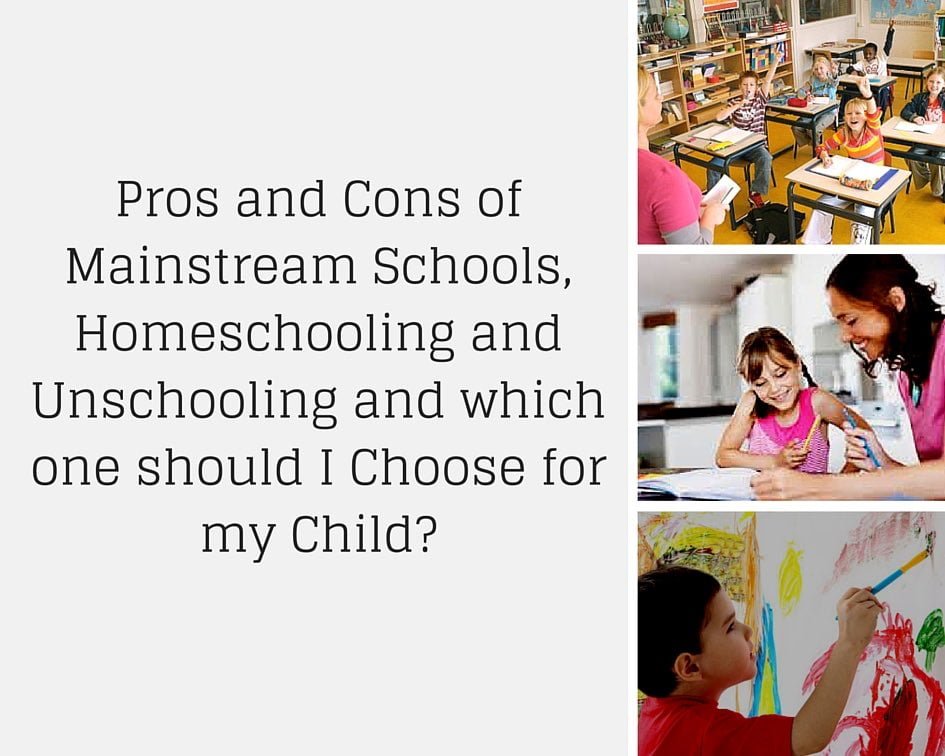Six Ways to Homeschool
There are so many ways you can homeschool your children, and every family will —and should—have their own unique approach to educational styles and techniques. After all, no two families are the alike and your ideals may be different than another family’s.
Here are six most common ways to homeschool that you may consider for your kids;
1. Structured Course Content
We found that a packaged curriculum save a lot of time since it is preplanned. You can buy most curriculum packs online. The lessons can take an hour to five or more. There are also software programs you can buy that have an entire year’s worth of lessons.
The pros were that it saves time. You do not have to spend hours each week creating your own lesson plans.
The cons are that most of these programs are expensive, especially if you get computer software. The books alone can easily cost a couple hundred dollars.
There are some websites that sell used curricula though, so if you prefer having your kids’ lessons preplanned then this is a good route for you.
Some of the most popular homeschool curricula are listed below. We did not list curricula that are done only online because kids are usually on the computer too much as it is!
The problem we found was that nearly all homeschool curriculum packs are expensive. If you are on a budget, homeschooling one child this way is costly enough, yet alone if you have more kids. Also, the vast majorities are Christian based and there are secular (non-religious) families.
At present, there are more and more secular based homeschool curricula available. A few of the most popular are:
Christian Homeschool Curricula
For a more detailed list of Christian homeschool curricula and other resources check out: Exploring Homeschooling.com
Secular Homeschool Curricula –
Calvert (Goes up to the 8th grade)
For a more detailed list of secular homeschool curricula and other resources check out: A2Z Homeschooling
2. Creating Your Own Course Content
Here you will need to be careful and check the laws of your individual state.
Some states require that you include science, math, language, arts, and civic studies or history in your curriculum and devote time to each of them on a daily basis.
Creating a curriculum by yourself will require you to do some research and find out what your children should be learning for their appropriate age and grade.
This method is the most cost effective and makes the best use of each child’s capabilities since it can be tailored according to their strengths and weaknesses.
They are all different and unique and have their own learning styles. By creating your own course content each and every one of your kids could blossom and grow at their own pace.
The best resource for books would be Amazon.com
You can even buy used books to save money. If you tend to order a lot of books and supplies from Amazon, you might want to become an Amazon Prime member to maximize the saving on postage.
3. Online Public School
Many public schools have their own curricula and materials available online for parents who wish to homeschool. You will have to check with your individual state to find out what they offer, but you can check the K12 website.
It probably has all the information you need and you can get started quickly. Best of all, it is free.
4. Online Private School
There are several private online homeschools available, though many can be quite expensive. The positives about this type of schooling is that your children will learn along with many other students who are also enrolled in the online classes and a teacher will guide them online or over the phone.
For a list of online private schools, the K12 website has several links and information.
5. Unschooling
This type of teaching takes into account your child’s interest in a particular topic and the curriculum is actually led by the child.
The term “unschooling” was coined by John Holt in the 1970’s.
How does it work?
Let’s say your child is interested in Ancient Greece. You could teach him from books, let him watch educational movies on the subject, take him to a museum that has Ancient Greek artifacts, do some art projects, and continue on with the topic until your child is ready to move to something else. Many homeschooling parents use this a lot with their kids.
Here is an article to learn more about unschooling
6. Educational Advocate
An educational advocate will work with you and your children to formulate a curriculum, and some even plan field trips as part of homeschooling to enhance learning. Your children’s progress will be monitored by educational consultants. For parents that want more structure and direction, this could be a good avenue.
HSLDA (Homeschool advocate site listing laws, news, support groups and more by state).
Whichever learning path or combination of paths you choose for your children, don’t be afraid to experiment over time.
If something doesn’t work then try something else. If parts of it work but not others, then keep what’s working and incorporate another road you would like to try.
The worst thing you could do for your kids is boxing them in with a curriculum they get bored with or hate doing. Sure, no kid will love every lesson or assignment, but homeschooling should be a fun and sometimes daring adventure for you both.
Happy Learning and Homeschooling Journey…













LEAVE A COMMENT